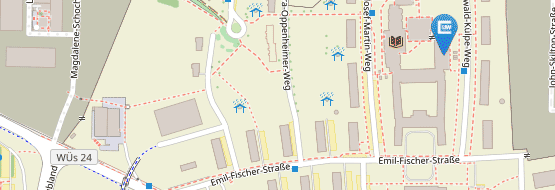Walther Hermann Nernst
Scholar of the month: Walther Hermann Nernst
* 25. June 1856 in Briesen, West Prussia † 18. November 1941 in Zibelle, Upper Lusatia
1883 Study of Physics, Chemistry and Mathematics in Zurich, Berlin and Graz
1887 Promotion in Würzburg
1887 Assistant for Wilhelm Ostwald in Leipzig
1889 Habilitation in Leipzig
1890 Private Lecturer in Göttingen
1891 extraordinary Professorship in Göttingen
1894 ordinary Professorship in Göttingen
1905 Professor for Physical Chemistry in Berlin
1920 Nobel Prize in Chemistry
1922 President of the Physikalisch-Technische Reichsanstalt in Berlin-Charlottenburg
1924 Professor for Physics in Berlin
1933 Withdrawal from academic science
The Universitätsarchiv Würzburg continues the honour the Nobel Laureates of the Alma Julia in May 2019 by presenting the career and successes of Walther Hermann Nernst. He was an outstanding scientist, who was rewarded with the Nobel Prize in Chemistry in 1920 for his research in Thermodynamics.
Time in Würzburg
Walther Nernst’s scientific education in the subjects of physics, mathematics and chemistry took place from 1883 on at the Universities of Zurich, Berlin and Graz. In Würzburg, Nernst was able to continue his research. The physicist Friedrich Kohlrausch offered Nernst a doctoral position in Würzburg and already one year later, he obtained his promotion about the Nernst–Ettingshausen effect. Through the acquaintance of Svante Arrhenius, which he made in Würzburg, Nernst met Wilhelm Ostwald shortly after his postdoctoral lecture qualification, who then again invited him to habilitate in Leipzig.
Commercial and Scientific Success
One of the most popular scientific successes of Walther Nernst was the so-called “Nernst lamp”, an electrolytic incandescent lamp that was a predecessor of the lightbulb. In 1897, he patented his invention and sold the patent two years later to AEG for one million Reichsmark. Nevertheless, his invention was never permanently established in the marked, which was most likely because of its impractical usage: it had to be pre-warmed before it could be used. The Nernst lamp was soon replaced by the more practical incandescent light bulb. Walther Nernst did not only have commercial success, but could also shine with his academic findings: He made an addition to the laws of thermodynamics by adding the third law, which says that “it is impossible for any process, no matter how idealized, to reduce the entropy of a system to its absolute-zero value in a finite number of operations.”[1] For his research in this matter, he was awarded the Nobel Prize in Chemistry in 1920.
Nernst and the War
When World War I broke out, Nernst was engaged in the general enthusiasm for war and made himself available as a driver for the military. He wanted to contribute with his scientific competences as well and helped to develop certain projectiles, which made the usage of chemical warfare agents possible. Thereby it is likely, that he was also engaged in the development of warfare agents like chloric gas.
When in the period between the two world wars, anti-Semitic tendencies started to rise in Germany, several scientists of Jewish heritage and their achievements were publically discriminated. During this time, Nernst appeared in public and private as a vehement defender of his long-term, Jewish friends like for example Albert Einstein or Walther Rathenau. Generally, he had a rather negative opinion about the third Reich, which made himself experience strong disadvantages, like the exclusion from the Senate of the Kaiser Wilhelm Society. Out of this reason, he withdrew himself from his academic career in 1933 and retired on his manor in the Upper Lusatia.
[1] Wilks, J. (1971). The Third Law of Thermodynamics, Chapter 6 in Thermodynamics, volume 1, ed. W. Jost, of H. Eyring, D. Henderson, W. Jost, Physical Chemistry. An Advanced Treatise, Academic Press, New York, page 477.


Recommended Readings:
Mendelssohn, Kurt: Walther Nernst und seine Zeit. Aufstieg und Niedergang der deutschen Naturwissenschaft. Weinheim 1976.
Nernst, Walther: Die theoretischen und experimentellen Grundlagen des neuen Wärmesatzes. Halle/Saale 1924.


